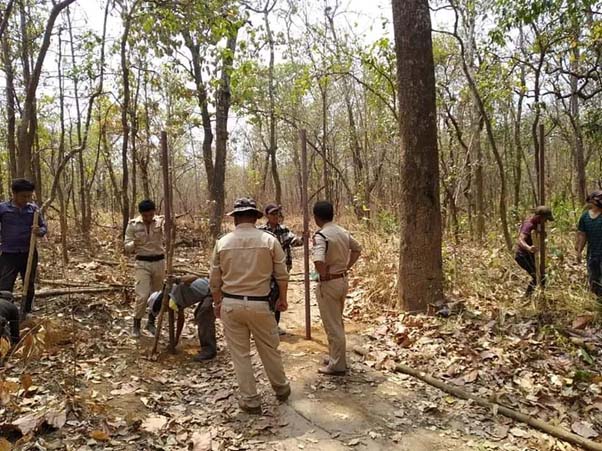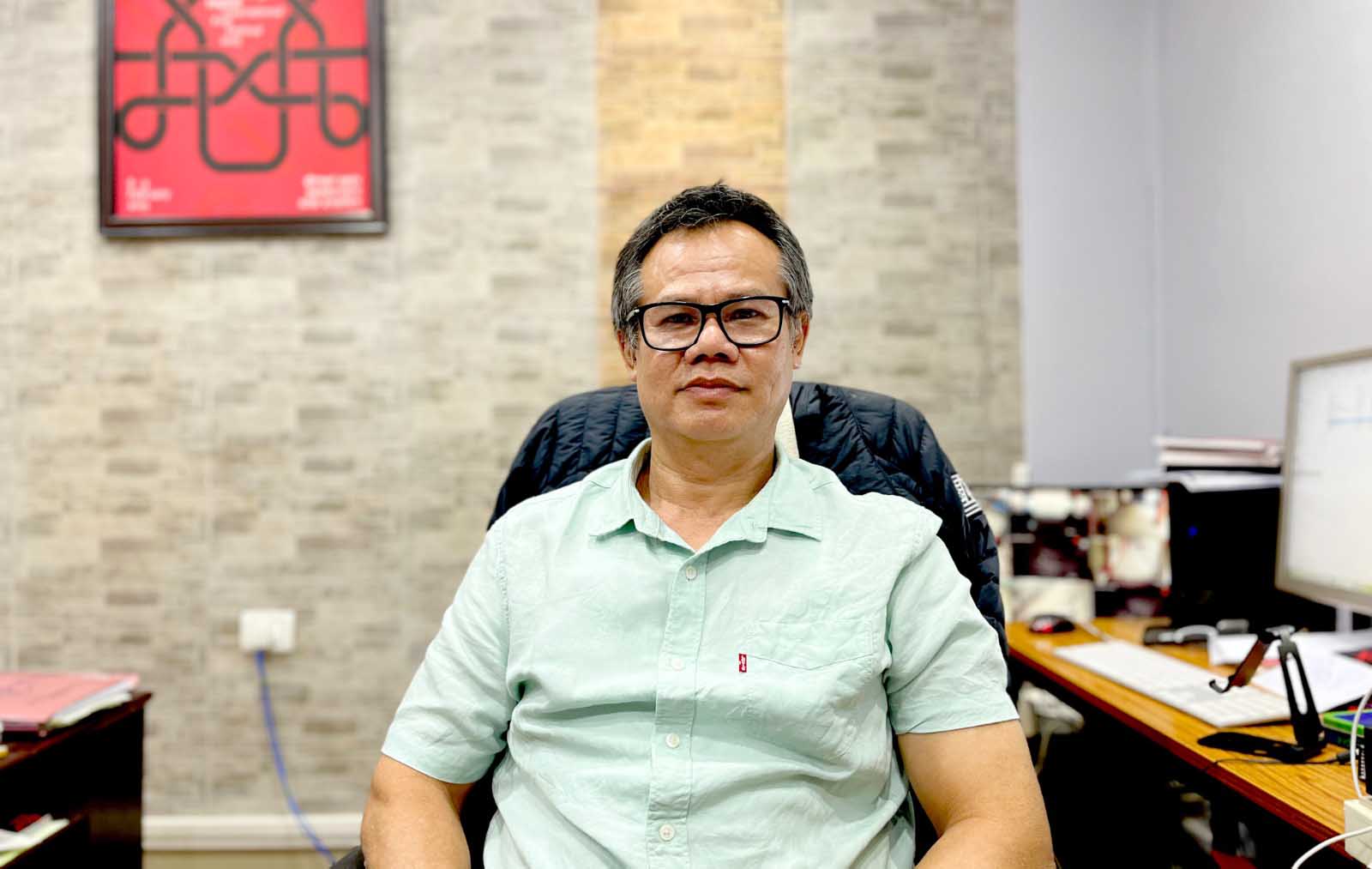Despite disruptions from Myanmar authorities, Manipur government has intensified temporary border fencing to contain the spread of COVID-19. Following the closure of Gate No. 1 and 2 along Indo-Myanmar border at Moreh from March 10, the construction of temporary border fencing along the international boundary has been started to restrict the movement of people and goods from both sides of the border.
Though the purpose of the construction of temporary border fencing is said to have contained the possible spread of COVID-19 from Myanmar side since the country is a close neighbour of China from where COVID-19 outbreak was first reported, the closure of Gate No. 1 and 2 has hit hard the residents of border town of Moreh and many villages along the international border.
One resident of Moreh said, “Prohibition of movement of people from Myanmar might be a good step to contain the spread of COVID-19 from Myanmar. But, it affects the lives of the people at this border town as we depend on Myanmar for everything like essential commodities including rice, pulses, cooking oil and vegetables. Distribution of few kilograms of rice by Manipur government is not sufficient to survive. In other parts of Manipur, people can get vegetables and other food items whenever there is relaxation of lockdown. The impact of closure of the international border on the people of Moreh and other border villages is harder, as the lockdown here started from March 10.
Temporary border fencing between Border Pillar Nos. 77 and 78 along Indo-Myanmar border was initiated by District Administration Tengnoupal.
However, the construction of border fencing though temporary cannot be carried out smoothly. The construction work near Border Pillar No 77 along the Indo-Myanmar border stretch was halted for a while on April 4 due to interruption from Myanmar Police and Myanmar Army. The officials from Myanmar stopped the fencing work stating that it was disputed land. Only when an understanding was brought between the two sides, the fencing work resumed and completed on April 7.
The lives of the people of border villages of B Bonjang, Kwatha Khunou and Moulphai situated between Border Pillar Nos. 80 and 82 are also affected by the completion of border fencing work along this sector on April 9 undertaken by Tengnoupal Police and district administration as precautionary measures to contain the COVID-19 pandemic.
A villager of Kwatha Khunou, who didn’t want to be named, expressed his apprehension of likely loss of livelihood due to the closure of border. The people of the villages near these Border Pillars cultivate and work on the other side of the boundary for livelihood. We get our essential commodities from Myanmar. Some rice as relief item has been distributed to people of B Bonjang and Moulphai village. This is good as support from government but it can’t keep our kitchens burning, he added.
While Phungyar AC MLA Leishiyo Keishing informed the media that the villagers of Kamjong wanted the lockdown to be strictly enforced, the recently constructed temporary border fencing between international Border Pillar Nos. 91 and 93 under Kamjong has been demolished by Myanmar Army.
According to a source, the Myanmar army along with the villagers of Myanmar demolished the GI sheet gates set up temporarily at Phaikhok and Skipe on the ground that the Indian authority had not consulted with Myanmar while constructing the gate and claimed that the fence was inside Myanmar territory.
It may be mentioned that the Kamjong district administration had put up temporary GI sheet gate to prevent entry into Phaikhok and Skipe villages to discourage cross border movement. The district administration is awaiting a nod from the Centre to designate the spot for construction of a temporary gate.
The people living at the border area in Kamjong district have expressed deep apprehension that there could be a spread of COVID-19 from across the border as there was a report that COVID-19 was detected at Jeti village in Myanmar, which is very close to Pilong village under Kamjong sub-division of Manipur making the villagers feel unsafe.
Meanwhile, the lives of about 20 villages of Kamjong district have been affected by the lockdown and temporary border fencing as their normal livelihoods depend on the aged-old cross-border activities.
However, Manipur Government’s constant efforts to contain the possible spread of COVID-19 from Myanmar have been strengthened to keep strict vigil along the Indo-Myanmar border particularly in the Indian side under Singhat sub-division in Churachandpur district following a man from the border village of Ngaljang under Behiang Public Health Centre, who returned from Myanmar village of Selbung after visiting his wife’s parents there.
One additional company of IRB has been deployed from April 23 and the company has been tasked to strengthen the concerted efforts of the district police and Assam Riffles to close gaps by carrying out regular patrolling activities covering Tuivai, Samtui and Tuivel river stretches as they are hot spots for crossing over the border.
There are also reports of some people trying to cross over from Khaukual village in Saikot sub-division, for which police teams have been deployed and villagers have been sensitised.
The Churachandpur district administration, with the help of district police and Assam Rifles, sealed motorable roads connected to Myanmar at three locations – BP Nos. 35 and 36 at Suangdai Village, BP Nos. 40 and 41 at Behiang and BP No 39 at Suangphuh Village from April 1.
The international boundary stretching from Border Pillar Nos. 32 (Sinzawl village) to 48 (T Khuangkhai village) is 79.5 Kms long. The terrain is rugged, mountainous, and seasonal rivers like Samtui, Tuivel and Tuivai form natural borders between Manipur and Myanmar.
When FPSJ Review asked about the Manipur government’s steps, United Committee, Manipur (UCM) President Sunil Karam said, “Though the purpose of temporary border fencing is to contain the spread of COVID-19 from Myanmar side, the government of Manipur should be cautious to avoid adverse affects on the already disputed Manipur-Myanmar boundaries.”












